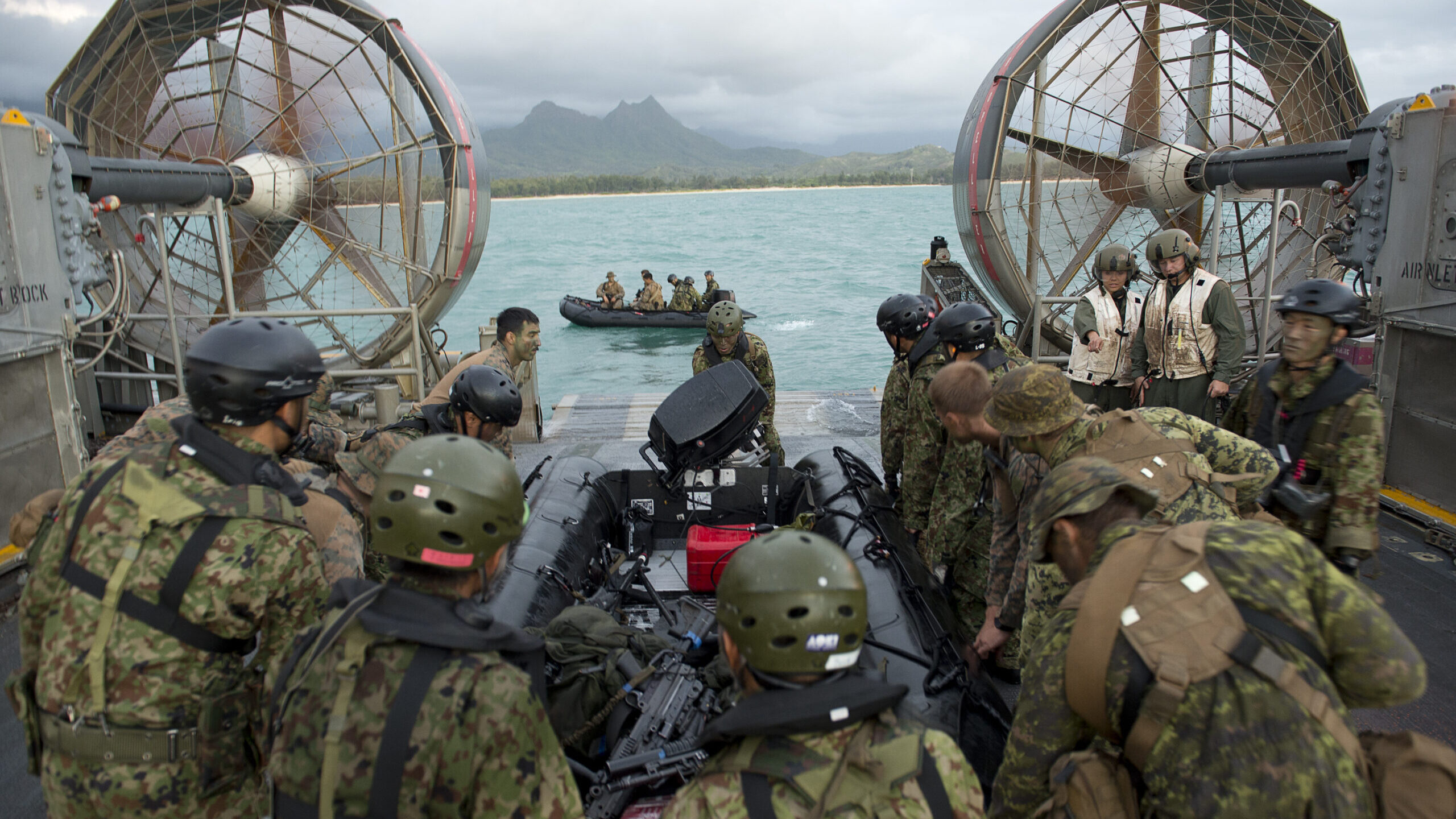
Japanese, Canadian and US forces unload a combat rubber raiding craft off a landing craft air cushion assigned to Assault Craft Unit (ACU) 5 as part of a training exercise during Rim of the Pacific (RIMPAC) Exercise 2014. (U.S. Navy photo by Mass Communication Specialist 2nd Class Bryan M. Ilyankoff/Released)
WASHINGTON: The US Navy today announced its major international, biannual exercise focused on the Indo-Pacific will take place from June 29 to Aug. 4 in and around the Hawaiian Islands and Southern California.
The exercise, dubbed the Rim of the Pacific, or RIMPAC, will feature 26 countries, 38 surface ships, four submarines, 170 aircraft and approximately 25,000 personnel, the San Diego-based US 3rd Fleet said in a statement today. Participants will include countries as far afield from Denmark and India, and a number of Pacific island and eastern Asian nations such as Thailand and Malaysia.
“As the world’s largest international maritime exercise, RIMPAC provides a unique training opportunity designed to foster and sustain cooperative relationships that are critical to ensuring the safety of sea lanes and security on the world’s interconnected oceans,” US 3rd Fleet said.
(1/2) @US3rdFleet announced #RIMPAC2022 for June 29-Aug. 4. With 26 nations including the 4 Quad nations & 5 South China Sea countries, 38 ships, 4 submarines, 9 national land forces, more than 170 jets & 25K people, RIMPAC is the world’s largest international maritime exercise
— US Strategic Command (@US_STRATCOM) June 1, 2022
This year’s RIMPAC will be the event’s 28th incarnation since its first gathering in 1971. Training scenarios in this year’s event will include “amphibious operations, gunnery, missile, anti-submarine and air defense exercises, as well as counter-piracy operations, mine clearance operations, explosive ordnance disposal, and diving and salvage operations,” according to the US Navy.
This year’s exercise will take place with two major international tensions in the backdrop: Russia’s invasion of Ukraine, which has united much of the Western world against Russian aggression, and China’s push to spread influence throughout the Pacific, which has prompted alarm in the US and Australia especially.
RELATED: US, Australia grapple with Solomon Islands tilt to China
Moscow has a history of attempting to spy on the exercises taking place at the international event. Similarly, China, which was disinvited from the 2018 event, has also sent unwanted vessels to observe the exercises, USNI reported at the time.
Top military brass frequently stress the need for the US to have strong relationships to counter Russian and Chinese aggression.
“The key piece here is allies and partners. We are not going to outspend China, so where do we focus on key capabilities that we think [of] as most important as a nation,” Chief of Naval Operations Adm. Michael Gilday told reporters last October in India. “But secondly, the asymmetric advantage — and I want to underscore asymmetric advantage that the United States has with its partners and allies.”






















